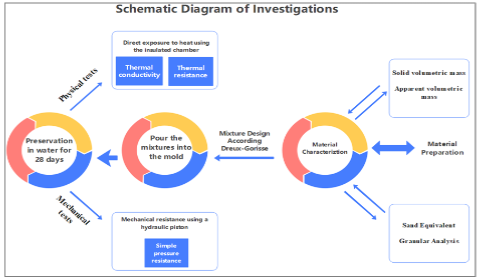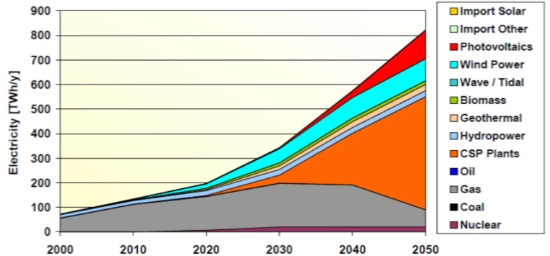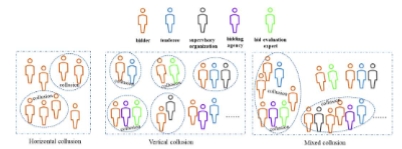Field and intervention study on indoor environment in professional classrooms
Abstract
To study the variation of environment in the professional classroom during lecture hours, multiple field experiments and intervention experiments on indoor and outdoor temperatures were conducted in a university professional classroom in Shaoxing during the spring. Environmental data, including indoor and outdoor temperatures, relative, and CO2 concentrations, were recorded every 5 min. Volatile organic compounds (VOC) were sampled, and indoor air quality was evaluated repeatedly. Results showed that the classroom’s average indoor air temperature ranged from 17.8–29.2 ℃, the average indoor relative humidity from 34.5%–91.0%, the average CO2 concentrations from 921.6–1805.2 ppmv, and total VOC concentrations from 330–682 ppbm. The subjective evaluation conducted during the intervention experiments indicated a significant increase in perceived odor intensity upon entering the classroom. When the CO2 concentration reached 2000 ppmv, the satisfaction and acceptability of the air quality for the subjects and invitees decreased significantly. In the temperature range of 17–31 ℃, the CO2 emission rate of the human body was estimated to increase by 0.78 L/h for every 1 ℃ increase in temperature. To maintain the indoor CO2 concentration at 1000 ppmv, the required ventilation rate for each person must be increased by 0.25 ± 0.3 L/s.
References
[1]Gao XY. Experimental Analysis of the Effect of Natural Ventilation on the CO2 Concentration in Campus Classroom. Chongqing University; 2016. doi: CNKI:CDMD:2.1016.732242
[2]Marchetti N, Cavazzini A, Pasti L, et al. A campus sustainability initiative: Indoor air quality monitoring in classrooms. In: Proceedings of the 2015 XVIII AISEM Annual Conference; 3-5 February 2015; Trento, Italy. doi: 10.1109/aisem.2015.7066774
[3]Deng SH, Lau J. Seasonal variations of indoor air quality and thermal conditions and their correlations in 220 classrooms in the Midwestern United States. Building and Environment. 2019; 157: 79-88. doi: 10.1016/j.buildenv.2019.04.038
[4]Shendell DG, Barnett C, Boese S. Science‐Based Recommendations to Prevent or Reduce Potential Exposure to Biological, Chemical, and Physical Agents in Schools. Journal of School Health. 2004; 74(10): 390-396. doi: 10.1111/j.1746-1561.2004.tb06603.x
[5]Clausen G, Carrick L, Fanger PO, et al. A Comparative Study of Discomfort Caused by Indoor Air Pollution, Thermal Load and Noisec. Indoor Air. 1993; 3(4): 255-262. doi: 10.1111/j.1600-0668.1993.00006.x
[6]Kabirikopaei A, Lau J. Uncertainty analysis of various CO2-based tracer-gas methods for estimating seasonal ventilation rates in classrooms with different mechanical systems. Building and Environment. 2020; 179: 107003. doi: 10.1016/j.buildenv.2020.107003
[7]Rajagopalan P, Andamon MM, Woo J. Year long monitoring of indoor air quality and ventilation in school classrooms in Victoria, Australia. Architectural Science Review. 2021; 65(1): 1-13. doi: 10.1080/00038628.2021.1988892
[8]Yu YZ, Wang B, You SJ, et al. The Effects of Manual Airing Strategies and Architectural Factors on the Indoor Air Quality in College Classrooms: A Case Study. Air Quality, Atmosphere & Health. 2021; 15(1): 1-13. doi: 10.1007/s11869-021-01074-y
[9]Liu JL, Yang X, Jiang QW, et al. Occupants’ thermal comfort and perceived air quality in natural ventilated classrooms during cold days. Building and Environment. 2019; 158: 73-82. doi: 10.1016/j.buildenv.2019.05.011
[10]Coley DA, Beisteiner A. Carbon Dioxide Levels and Ventilation Rates in Schools. International Journal of Ventilation. 2002; 1(1): 45-52. doi: 10.1080/14733315.2002.11683621
[11]Kuga K, Ito K, Wargocki P. The effects of warmth and CO2 concentration, with and without bioeffluents, on the emission of CO2 by occupants and physiological responses. Indoor Air. 2021; 31(6): 2176-2187. doi: 10.1111/ina.12852
[12]Haddad S, Synnefa A, Ángel Padilla Marcos M, et al. On the potential of demand-controlled ventilation system to enhance indoor air quality and thermal condition in Australian school classrooms. Energy and Buildings. 2021; 238: 110838. doi: 10.1016/j.enbuild.2021.110838
[13]Haverinen-Shaughnessy U, Shaughnessy RJ, Cole EC, et al. An assessment of indoor environmental quality in schools and its association with health and performance. Building and Environment. 2015; 93: 35-40. doi: 10.1016/j.buildenv.2015.03.006
[14]Mendell MJ, Eliseeva EA, Davies MM, et al. Do classroom ventilation rates in California elementary schools influence standardized test scores? Results from a prospective study. Indoor Air. 2015; 26(4): 546-557. doi: 10.1111/ina.12241
[15]Korsavi SS, Montazami A, Mumovic D. Ventilation rates in naturally ventilated primary schools in the UK; Contextual, Occupant and Building-related (COB) factors. Building and Environment. 2020; 181: 107061. doi: 10.1016/j.buildenv.2020.107061
[16]Mutmainnah N, Mulyadi R, Hamzah B. Air Quality Characteristics in Junior High School Classroom with Natural Ventilation in Pangkep Regency. EPI International Journal of Engineering. 2019; 2(2): 157-161. doi: 10.25042/epi-ije.082019.11
[17]Shrestha M, Rijal HB, Kayo G, et al. An investigation on CO2 concentration based on field survey and simulation in naturally ventilated Nepalese school buildings during summer. Building and Environment. 2022; 207: 108405. doi: 10.1016/j.buildenv.2021.108405
[18]Taemthong W. Selecting Ventilation Fan Capacity for University Classroom Based on Empirical Data. International Journal of Environmental Science & Sustainable Development. 2019; 4(1): 13-21. doi: 10.21625/essd.v4i1.487
[19]Chan WR, Li X, Singer BC, et al. Ventilation rates in California classrooms: Why many recent HVAC retrofits are not delivering sufficient ventilation. Building and Environment. 2020; 167: 106426. doi: 10.1016/j.buildenv.2019.106426
[20]Cai CR, Sun ZW, Weschler LB, et al. Indoor air quality in schools in Beijing: Field tests, problems and recommendations. Building and Environment. 2021; 205: 108179. doi: 10.1016/j.buildenv.2021.108179
[21]Sahu V, Gurjar, BR. Spatial and seasonal variation of air quality in different microenvironments of a technical university in India. Building and Environment. 2020; 185: 107310. doi: 10.1016/j.buildenv.2020.107310
[22]Zhang D, Ding E, Bluyssen PM. Guidance to assess ventilation performance of a classroom based on CO2 monitoring. Indoor and Built Environment. 2022; 31(4): 1107-1126. doi: 10.1177/1420326x211058743
[23]Choe Y, Shin JS, Park J, et al. Inadequacy of air purifier for indoor air quality improvement in classrooms without external ventilation. Building and Environment. 2022; 207: 108450. doi: 10.1016/j.buildenv.2021.108450
[24]Kierat W, Ai Z, Melikov A, et al. Towards enabling accurate measurements of CO2 exposure indoors. Building and Environment. 2022; 213: 108883. doi: 10.1016/j.buildenv.2022.108883
[25]Chi CC, Chen WD, Guo M, et al. Law and features of TVOC and Formaldehyde pollution in urban indoor air. Atmospheric Environment. 2016; 132: 85-90. doi: 10.1016/j.atmosenv.2016.02.043
[26]Fu N, Wei P, Jia YB, et al. Indoor volatile organic compounds in densely occupied education buildings of four universities: Target list, concentration levels and correlation analysis. Building and Environment. 2021; 191: 107599. doi: 10.1016/j.buildenv.2021.107599
[27]Huang LH, Qian H, Deng SX, et al. Urban residential indoor volatile organic compounds in summer, Beijing: Profile, concentration and source characterization. Atmospheric Environment. 2018; 188: 1-11. doi: 10.1016/j.atmosenv.2018.06.009
[28]Jia YB, Zheng X, Guan J, et al. Investigation of indoor total volatile organic compound concentrations in densely occupied university buildings under natural ventilation: Temporal variation, correlation and source contribution. Indoor and Built Environment. 2020; 30(6): 838-850. doi: 10.1177/1420326x20914000
[29]Sun X, He J, Yang X. Human breath as a source of VOCs in the built environment, Part I: A method for sampling and detection species. Building and Environment. 2017; 125: 565-573. doi: 10.1016/j.buildenv.2017.06.038
[30]He J, Sun X, Yang X. Human respiratory system as sink for volatile organic compounds: Evidence from field measurements. Indoor Air. 2019; 29(6): 968-978. doi: 10.1111/ina.12602
[31]Yang T, Xiong J, Tang X, et al. Predicting Indoor Emissions of Cyclic Volatile Methylsiloxanes from the Use of Personal Care Products by University Students. Environmental Science & Technology. 2018; 52(24): 14208-14215. doi: 10.1021/acs.est.8b00443
[32]Xiong JY, He ZC, Tang XC, et al. Modeling the Time-Dependent Concentrations of Primary and Secondary Reaction Products of Ozone with Squalene in a University Classroom. Environmental Science & Technology. 2019; 53(14): 8262-8270. doi: 10.1021/acs.est.9b02302
[33]Duan JH, Wang LX, Zhuo SH, et al. Seasonal variation of airborne phthalates in classroom and dormitory, and its exposure assessment in college students. Energy and Buildings. 2022; 265: 112078. doi: 10.1016/j.enbuild.2022.112078
[34]Vallecillos L, Borrull A, Marcé RM, et al. Passive sampling to control air quality in schools: Uptake rate determination and application. Indoor Air. 2020; 30(5): 1005-1017. doi: 10.1111/ina.12684
[35]Vornanen-Winqvist C, Alapieti T, Mikkola R, et al. Volatile organic compounds in school buildings with indoor air quality problems. In: Proceedings of Joint annual meeting of the International Society of Exposure Science and the International Society for Environmental Epidemiology; 2019.
[36]Fong ML, Lin Z, Fong KF, et al. Evaluation of thermal comfort conditions in a classroom with three ventilation methods. Indoor Air. 2011; 21(3): 231-239. doi: 10.1111/j.1600-0668.2010.00693.x
[37]Gohara T, Iwashita G. Field study on the indoor air quality in elementary schllos in Kagoshima city: Part 1 VOCs concentrations in elementary schools. Journal of Architecture & Planning. 2002; 67(553): 63-70. doi: 10.3130/aija.67.63_2
[38]Zhou JQ, Deng BQ, Kim CN. Numerical Simulation of VOCs Distribution with an Air Cleaner in a Classroom. International Symposium on Heating, Ventilating and Air Conditioning; 2009.
[39]Can E, Özden Üzmez Ö, Döğeroğlu T, et al. Indoor air quality assessment in painting and printmaking department of a fine arts faculty building. Atmospheric Pollution Research. 2015; 6(6): 1035-1045. doi: 10.1016/j.apr.2015.05.008
[40]ASHRAE. Standard 62.1., 2016. Ventilation for Acceptable Indoor Air Quality. American Society of Heating, Refrigerating and Air-Conditioning Engineers, Inc.; 2016.
[41]Committee ME-062, Ventilation and Air conditioning. Australian Standard, AS 1668.2-2012. The Use of Ventilation and Air Conditioning in Buildings, Part 2: Mechanical Ventilation in Buildings. Committee ME-062, Ventilation and Air Conditioning; 2012.
[42]British Standards Institute. S. EN15251., 2008. Indoor Environmental Input Parameters for Design and Assessment of Energy Performance of Buildings Addressing Indoor Air Quality, Thermal Environment Lighting and Acoustics. British Standards Institute; 2008.
[43]Verein Deutscher Ingenieure. VDI 6022 Part 3., 2011. Ventilation and Indoor Air Quality-Assessment of Indoor Air Quality. Verein Deutscher Ingenieure; 2011.
[44]Ministry of Housing and Urban-Rural Development of the People’s Republic of China. GB, GB 50736. Design Code for Heating Ventilation and Air Conditioning of Civil Buildings. China Architecture & Building Press; 2012.
[45]Park S, Park H, Seo J. Analysis on the Exhaust Air Recirculation of the Ventilation System in Multi-Story Building. Applied Sciences. 2021; 11(10): 4441. doi: 10.3390/app11104441
[46]Rastogi K, Lohani D, Acharya D. Context-Aware Monitoring and Control of Ventilation Rate in Indoor Environments Using Internet of Things. IEEE Internet of Things Journal. 2021; 8(11): 9257-9267. doi: 10.1109/jiot.2021.3057919
[47]Zhang XJ, Zhao CX, Zhang TY, et al. Association of indoor temperature and air quality in classrooms based on field and intervention measurements. Building and Environment. 2023; 229: 109925. doi: 10.1016/j.buildenv.2022.109925
[48]The state bureau of quality and technical supervision of the People’s Republic of China. B/T, GB/T 18204.18-2000., 2000. Method for Determination of Air Change Flow of Indoor Air in Public Places. The State Bureau of Quality and Technical Supervision of the People’s Republic of China; 2000.
[49]Jindal A. Investigation and analysis of thermal comfort in naturally ventilated secondary school classrooms in the composite climate of India. Architectural Science Review. 2019; 62(6): 466-484. doi: 10.1080/00038628.2019.1653818
[50]Persily AK, Jonge LD. Carbon Dioxide Generation and Building Occupants. ASHRAE Journal. 2017; 59(7): 64-66.
[51]Zheng X, Jia YB, Guan J, et al. Impact analysis of human emission on total volatile organic compound concentration in university classrooms: A field study. Heating Ventilating & Air Conditioning. 2020; 50(1): 115-121.
[52]Qi MW, Li XF, Weschler LB, et al. CO2 generation rate in Chinese people. Indoor Air. 2014; 24(6): 559-566. doi: 10.1111/ina.12110
[53]Wang XN. Experimental Study of Human Carbon Dioxide Generaton Rate at Different Activity Levels. Xi’an University of Architecture and Technology; 2021.
[54]Zhang YJ. The Experimental Research into the Influence of Temperature and Carbon Dioxide to Human Comfort in Small Space. Chongqing University; 2018.
[55]Robinson WR, Peters RH, Zimmermann J. The effects of body size and temperature on metabolic rate of organisms. Canadian Journal of Zoology. 1983; 61(2): 281-288. doi: 10.1139/z83-037
[56]Luo MH, Zhou X, Zhu YX, et al. Revisiting an overlooked parameter in thermal comfort studies, the metabolic rate. Energy and Buildings. 2016; 118: 152-159. doi: 10.1016/j.enbuild.2016.02.041
[57]Li KW, Shen JD, Zhang X, et al. Variations and characteristics of particulate matter, black carbon and volatile organic compounds in primary school classrooms. Journal of Cleaner Production. 2020; 252: 119804. doi: 10.1016/j.jclepro.2019.119804
[58]Kang J, Liu JJ, Pei JJ. The indoor volatile organic compound (VOC) characteristics and source identification in a new university campus in Tianjin, China. Journal of the Air & Waste Management Association. 2017; 67(6): 725-737. doi: 10.1080/10962247.2017.1280561
[59]Liu S, Li R, Wild RJ, et al. Contribution of human-related sources to indoor volatile organic compounds in a university classroom. Indoor Air. 2015; 26(6): 925-938. doi: 10.1111/ina.12272
Copyright (c) 2024 Yue Lyu

This work is licensed under a Creative Commons Attribution 4.0 International License.












